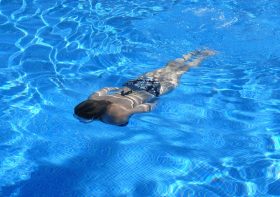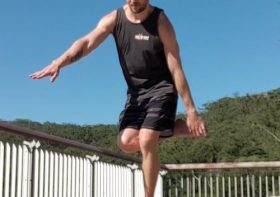CrossFit Recovery: Strategies for Minimizing Soreness and Fatigue

CrossFit has gained immense popularity in recent years due to its high-intensity workouts and ability to transform bodies. However, CrossFit workouts can also leave athletes feeling sore and fatigued. In order to maximize performance and prevent injuries, proper recovery strategies are essential. In this article, we will discuss effective techniques for minimizing soreness and fatigue in CrossFit athletes.
Understanding Soreness
Before delving into recovery strategies, it’s important to understand why CrossFit workouts often result in soreness. CrossFit exercises involve movements that engage multiple muscle groups, leading to microscopic tears in muscle fibers. This, in turn, triggers inflammation and the release of pain-inducing chemicals. Additionally, CrossFit workouts often push athletes to their physical limits, causing muscle fatigue and the accumulation of metabolic waste products.
Recovery Strategy #1: Proper Nutrition
An essential component of recovery is proper nutrition. After an intense CrossFit session, your body needs the right combination of macronutrients and micronutrients to repair and rebuild muscle tissue. Focus on consuming an adequate amount of lean protein, carbohydrates, and healthy fats. Protein aids in muscle repair, while carbohydrates replenish glycogen stores and fats provide long-lasting energy.
Recovery Strategy #2: Active Cool Down
Many CrossFit athletes underestimate the importance of a cool-down routine. After a workout, engaging in light, low-intensity exercises can help flush out metabolic wastes and improve blood circulation. Consider incorporating activities such as cycling, jogging, or gentle stretching into your cool-down routine to promote the removal of lactic acid and reduce post-workout soreness.
Recovery Strategy #3: Adequate Sleep
Sleep is when the body undergoes repair and regeneration. Aim for 7-9 hours of quality sleep each night to optimize recovery. During sleep, the body releases growth hormones, repairs damaged tissues, and consolidates memory. Adequate sleep not only minimizes soreness but also enhances overall athletic performance and cognitive function.
Recovery Strategy #4: Foam Rolling and Stretching
Foam rolling and stretching are effective recovery strategies to relieve muscle soreness and improve flexibility. Foam rolling targets trigger points and releases tension in muscles, reducing inflammation and promoting blood flow. Incorporate foam rolling and static stretching exercises into your post-workout routine to prevent muscle imbalances and increase range of motion.
Recovery Strategy #5: Hydration
Proper hydration is crucial for recovery. Dehydration can exacerbate muscle soreness and delay the healing process. During intense CrossFit workouts, you lose a significant amount of water through sweating. Therefore, make sure to drink enough water before, during, and after your workouts to maintain optimal hydration levels.
Recovery Strategy #6: Ice Baths and Contrast Therapy
Cold water immersion, such as ice baths, can help reduce inflammation and alleviate muscle soreness. This technique constricts blood vessels, slowing down the inflammatory response and decreasing swelling. Contrast therapy, which involves alternating between hot and cold water, can also be effective in reducing post-workout soreness and facilitating recovery.
Recovery Strategy #7: Active Recovery Days
While it’s important to allow your body to rest, completely avoiding physical activity can lead to stiffness and delayed recovery. Incorporate active recovery days into your training schedule to engage in low-intensity exercises such as swimming, yoga, or Pilates. These activities promote blood flow, enhance mobility, and facilitate the removal of metabolic wastes.
Conclusion
Recovery is a vital component of any CrossFit training regime. Implementing these strategies, including proper nutrition, active cool down, adequate sleep, foam rolling, hydration, ice baths, contrast therapy, and active recovery days, can help minimize soreness and fatigue while maximizing your performance and overall athletic potential. Incorporate these techniques into your routine and reap the benefits of improved recovery and enhanced results.


